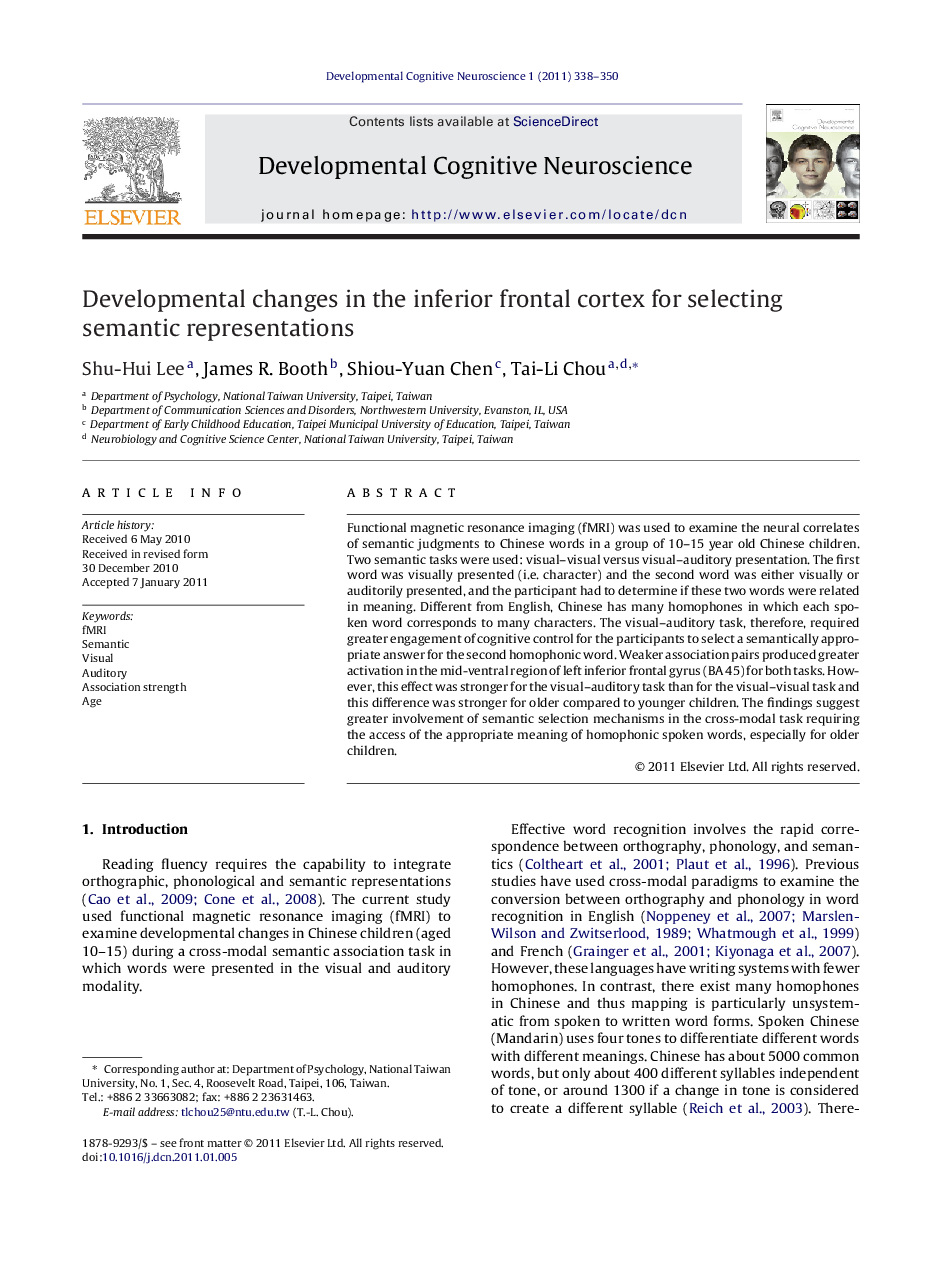| Article ID | Journal | Published Year | Pages | File Type |
|---|---|---|---|---|
| 4316776 | Developmental Cognitive Neuroscience | 2011 | 13 Pages |
Functional magnetic resonance imaging (fMRI) was used to examine the neural correlates of semantic judgments to Chinese words in a group of 10–15 year old Chinese children. Two semantic tasks were used: visual–visual versus visual–auditory presentation. The first word was visually presented (i.e. character) and the second word was either visually or auditorily presented, and the participant had to determine if these two words were related in meaning. Different from English, Chinese has many homophones in which each spoken word corresponds to many characters. The visual–auditory task, therefore, required greater engagement of cognitive control for the participants to select a semantically appropriate answer for the second homophonic word. Weaker association pairs produced greater activation in the mid-ventral region of left inferior frontal gyrus (BA 45) for both tasks. However, this effect was stronger for the visual–auditory task than for the visual–visual task and this difference was stronger for older compared to younger children. The findings suggest greater involvement of semantic selection mechanisms in the cross-modal task requiring the access of the appropriate meaning of homophonic spoken words, especially for older children.
▸ This study used a visual-auditory semantic task to explore meaning processing. ▸ We tested competing hypotheses: greater phonological mediation vs. cognitive control. ▸ Children were given homophonic spoken words in Chinese. ▸ We found selection demands for words, supporting the cognitive control hypothesis. ▸ Developmental increases were also found on greater selection demands.
